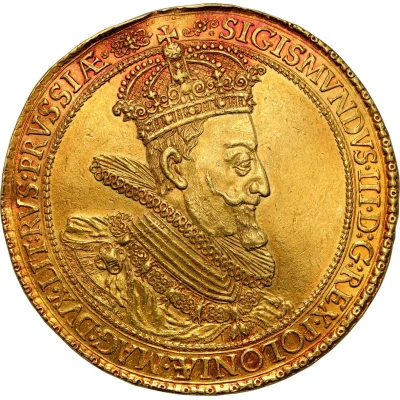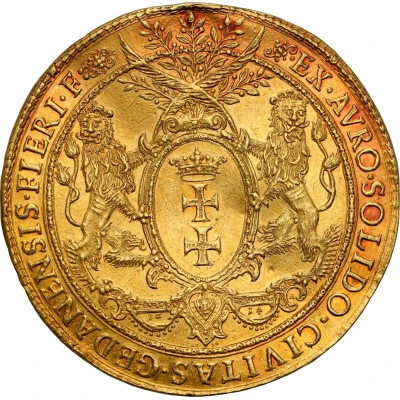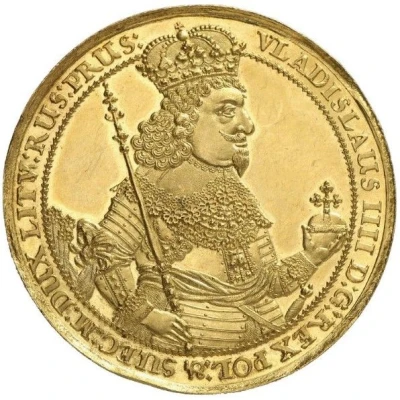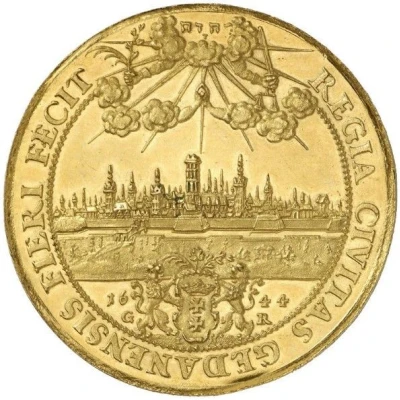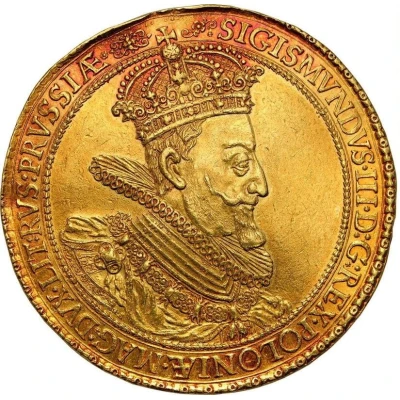
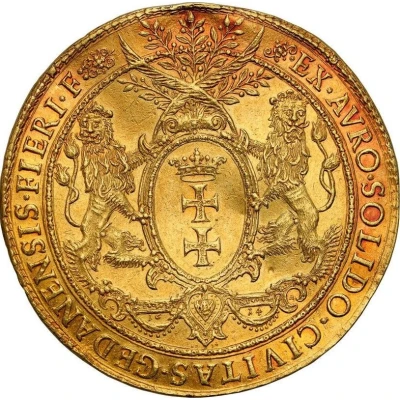

7 Dukatów / Donatywa - Sigismund III Vasa Gdańsk
1614 year| Gold | 24.55 g | 43 mm |
| Issuer | Polish–Lithuanian Commonwealth |
|---|---|
| King | Sigismund III Vasa (Zygmunt III Waza) (1587-1632) |
| Type | Non-circulating coin |
| Year | 1614 |
| Value | 7 Ducats |
| Currency | First Zloty (1573-1795) |
| Composition | Gold |
| Weight | 24.55 g |
| Diameter | 43 mm |
| Shape | Round |
| Technique | Milled |
| Orientation | Medal alignment ↑↑ |
| Demonetized | Yes |
| Updated | 2024-10-07 |
| Numista | N#414836 |
|---|---|
| Rarity index | 100% |
Reverse
Oval arms of the city of Danzig supported by two lions facing, and topped with palm and olive sprigs. Divided date in lobes of cartouche below.
Script: Latin
Lettering:
EX • AVRO • SOLIDO • CIVITAS • GEDANENSIS • FIERI • F
16 14
Translation: From solid gold the City of Gdansk was made
Designers: Samuel Ammon, F-B (full name unknown)
Comment
Note: A ‘Donatywa’ was a gold coin, weighing at least one ducat was a coin or medal minted exclusively for special guests visiting the city, like the king. While the dies made by Samuel Ammon were made for half-Portugals i.e. five ducats, the city decided to mint higher denominations with it, like this 7 ducat piece.
This was one of the early pieces minted and designed by Samuel Ammon a well-known artist who also designed the dies for the famous 100 ducat coin in 1614. He came to Gdańsk in 1613 and he designed coins with incredible detail, some of which can only be seen under a magnifying glass.
Interesting fact
One interesting fact about the Non-circulating coin 7 Dukatów / Donatywa - Sigismund III Vasa (Gdańsk) 1614 from Polish–Lithuanian Commonwealth made of Gold weighing 24.55 g is that it was minted during the reign of King Sigismund III Vasa, who was the last king of Poland and the first king of the Polish-Lithuanian Commonwealth. He ruled from 1587 to 1632 and was known for his efforts to strengthen the Commonwealth and promote Catholicism. The coin's design features an image of the king on one side and the Polish coat of arms on the other. It was minted in the city of Gdańsk, which was an important center of trade and commerce in the region at the time.
